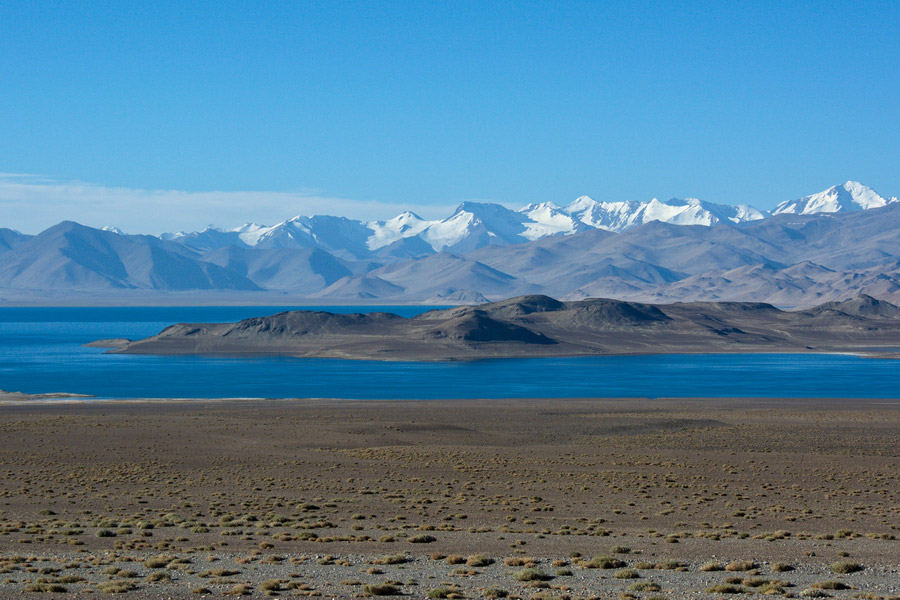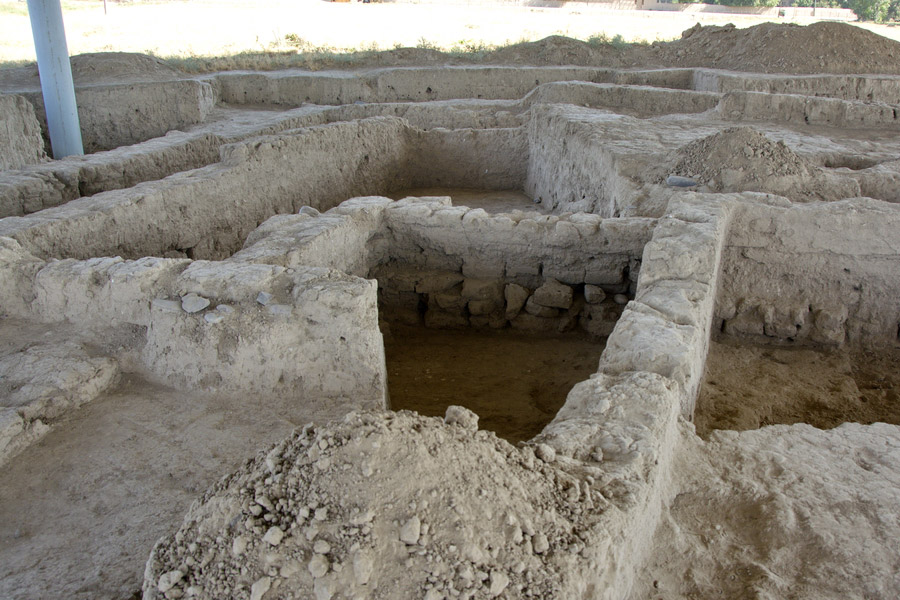UNESCO World Heritage Sites in Tajikistan

Tajikistan and UNESCO
Tajikistan became a full-fledged member of UNESCO in 1993. Today, the country boasts four World Heritage Sites and 15 sites on the Tentative List.
Tajikistan actively collaborates with UNESCO in the fields of cultural and historical heritage, conducting research on territories and archaeological sites of potential global interest. In 2004, Dushanbe, the capital of Tajikistan, was designated a UNESCO World Heritage City.
UNESCO World Heritage Sites in Tajikistan
Tajikistan is home to four UNESCO World Heritage Sites:
- Sarazm (inscribed in 2010),
- Tajik National Park (Pamir Mountains) (inscribed in 2013),
- Tugay forests of the Tigrovaya Balka Nature Reserve (included in 2023),
- Zarafshan-Karakum Corridor (since 2023).
Sarazm

Sarazm is an ancient settlement dating back to the 4th and 3rd millennia BC. This place, whose name literally translates to "where the land begins," serves as evidence of early human development in the Central Asian region. Even at that time, there was cultural and trade exchange taking place. Researchers have uncovered proof of exchange and trade between Sarazm and regions like Mesopotamia, modern India, and Turkmenistan. Not only did the caravans of the Great Silk Road pass through here, but also the routes of the Great Lapis Lazuli and Tin Roads. Sarazm contains ruins of palaces and religious buildings. Interestingly, a ventilation system was developed here several thousand years ago. Archaeologists have also discovered tools, metal and stone jewelry, worked shells, and much more.
These findings were uncovered by scientists during the second half of the 20th century while exploring the ancient settlement. Consequently, archaeological work continues on the 17-hectare site of the ancient settlement.
Tajik National Park (Mountains of the Pamirs)

This extraordinary area, spanning more than 2.5 million hectares, covers nearly 20% of Tajikistan. The National Park is situated in the heart of the Pamir Mountains, which boast some of the highest peaks in Eurasia. Each year, hundreds of people from around the globe journey here to scale the mountains, many of which reach heights of over 7,000 meters. Within the Pamir Reserve—a part of the National Park—there are over a thousand glaciers, nearly fifty lakes, and a diverse array of flora and fauna.
The Pamirs are home to the Fedchenko Glacier, which is considered the longest glacier outside the polar regions. Karakul Lake also holds a unique distinction; it is said to be the highest meteoric-origin lake in the world. The area is also a habitat for rare animal species listed in the Red Book. Additionally, this region experiences frequent earthquakes due to its seismic activity.
It is anticipated that by 2030, Tajik National Park will become a biosphere zone and a significant portion of the International National Park, which will encompass territories from Afghanistan, Pakistan, and China.
Tugay forests of the Tigrovaya Balka Nature Reserve
The Tigrovaya Balka Reserve, a haven of natural beauty, encompasses diverse landscapes such as the Kashka-Kum desert, the Khoja-Koziyon mountains, the Buritau peak, and vast tugai forests. These forests are globally unique, being the only place on Earth where the entire ecosystem of tugai forests with Asian poplar is perfectly preserved. This area is also renowned for its significant biodiversity.
Zarafshan-Karakum Corridor
Turning to the Zarafshan-Karakum corridor, recognized as a UNESCO natural site, it's a crucial segment of the Great Silk Road in present-day Central Asia, linking various caravan routes. In Tajikistan alone, it includes nine notable sites: the ancient city of Penjikent, Gardani Hisor, the Khoja Muhammad Bashoro Mausoleum, the Sanjarshah settlement, Hisorak Fortress, Mug Castle, Kum Fortress, Tali Hamtuda, and the historical Toksankoriz (Toksankorez) irrigation system. These sites collectively highlight the corridor's rich historical and cultural significance.
- Mausoleum of Amir Hamza Hasti-Podshokh (inscribed in 1999): This medieval structure is adorned with unique Arabic epigraphy found nowhere else in the world.
- Ancient site of Batudasht IV (inscribed in 1999): Only ruins remain of this prehistoric settlement, which spans 10 hectares. Archaeological excavations have uncovered cult structures and other artifacts from the 6th to 4th centuries BC.
- Ancient settlement of Tahti-Sangin (included in 1999): This site is home to the famous Oxa temple, built no later than the 3rd century BC. Archaeologists have also discovered numerous Greek-Macedonian weapons and a treasure trove of coins dating from the 4th to 3rd centuries BC.
- Buddhist Monastery of Ajina Tepe (listed in 1999): The remains of a 6th to 8th-century Buddhist monastery can be found on Ajina Tepe hill, near the town of Bokhtar. Monastic cells and some structures have been preserved. Excavations on the monastery grounds uncovered a 12-meter-long statue of Buddha lying on his right side.
- Mausoleum of Khoja Mashad (listed in 1999): This complex, consisting of a mosque, madrasa, and mausoleum, was constructed between the 9th and 12th centuries. The earliest structure is the eastern mausoleum.
- Mausoleum of Khoja Nakshiron (listed in 1999): This 11th to 12th-century mausoleum comprises two small vaults lined with bricks. The mausoleum is a unique pre-Mongol period structure, as it features a protruding portal not typical for that time.
- Ancient Penjikent (included in 1999): From the 5th to 8th centuries, this area was home to a large city complete with a fortress, residential quarters, market squares, and a necropolis.
- Ancient city of Shahriston (Kahkaha) (included in 1999): This site was the capital of the ancient state of Ustrushana from the 6th to 9th centuries. Today, the ruins of the Kalai Kahkaha II palace, a shopping plaza, and the remains of a mosque built on the site of a pagan temple still stand.
- Mausoleum of Muhammad Bashoro (included in 1999): Constructed in the 11th to 12th centuries, this building combined a mosque and mausoleum under one roof and has been well-preserved.
- Zorkul State Reserve (included in 2006): This remarkable area is characterized by lakes, rivers, and an abundance of highland vegetation, as well as numerous mammals and birds.
- Dashti Jum State Reserve (included in 2006): The reserve is home to four types of forests and hosts dozens of species of animals, birds, and fish, some of which are included in the Red Book.
- Kusavlisay Reserve (included in 2006): This reserve's primary purpose is to protect the juniper forest, which contains three species of juniper.
- The Fann Mountains (included in 2006): This significant mountain range is part of the Gissar and Zerafshan Ranges. The Fann Mountains boast a unique landscape that remains untouched by human activity.
- Attractions of the Great Silk Road in Tajikistan (included in 2013): These sites include ancient Pendjikent, the ancient settlement of Bujikat, Gissar Castle, the Buddhist monastery of Ajina-Tepe, the ancient settlement of Takhti-Sangin, the Mausoleum of Khoja Mashad, and the ancient settlement of Hulbuk.
- Hulbuk, the Capital of Ancient Huttal (incorporated in 2021): This site preserves a palace complex and various historical buildings, including ancient baths, places of worship, and cemeteries.
Tajikistan's globally significant heritage is primarily showcased through its UNESCO Tentative List. This list features ancient settlements, mausoleums, nature reserves, and even a Buddhist monastery. However, while traveling in Tajikistan, one should not miss the two sites on the World Heritage List. The ancient settlement of Sarazm and the Tajik National Park in the Pamir Mountains are sure to impress even the most well-traveled tourists.
Discover more about the intangible UNESCO World Heritage Sites in Tajikistan.

